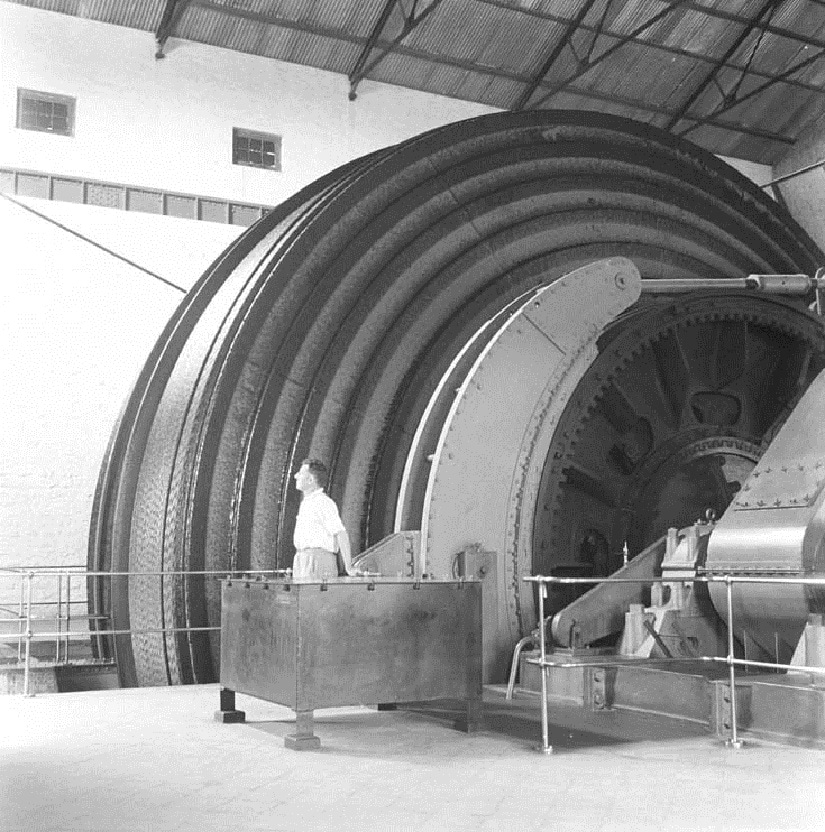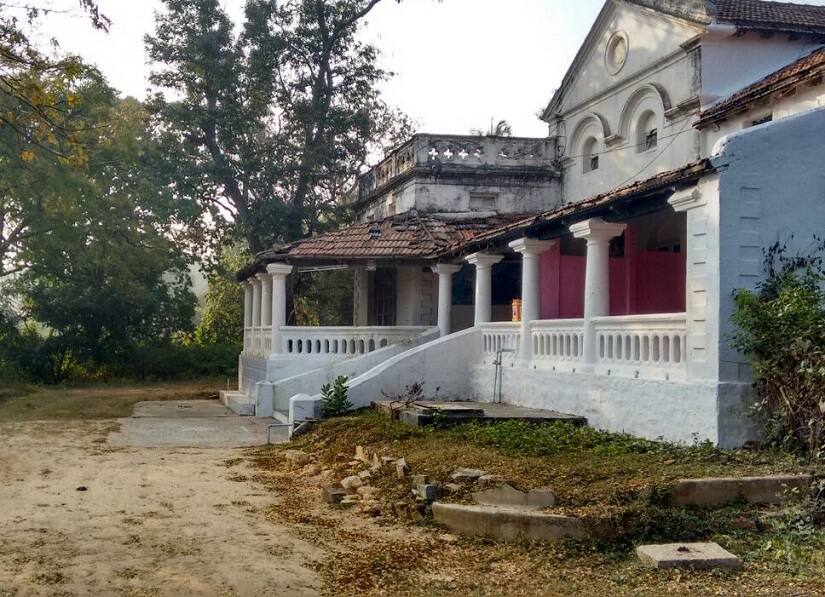The voters in Kolar Gold Fields (KGF), the once famous gold mining town, are a disillusioned lot. They have now come to terms with a bitter truth: No political leader has revived the defunct gold mines
The election campaign has reached its final lap in Karnataka. But the voters in Kolar Gold Fields (KGF) — the once famous gold mining town in a corner of the state — are a disillusioned lot. They have now come to terms with a bitter truth: Their dreams of gold seem to have finally turned into dust. For two decades now, every single politician who stood for election here had promised they would get the defunct gold mines revived. And now, the politicians themselves aren’t talking about it. The residents of KGF no longer dream of a miraculous revival, which would turn the crumbling town back into the ‘Little England’ it once was. In fact, they want nothing to do with gold any more; they just want their township to be given a new lease of life, so that they can find a means to earn a livelihood and survive.
![kolargold.feilds.6]()
The three main candidates standing from here in this election are either dynasts or veterans. Roopkala is the daughter of Muniyappa, a veteran Congress leader from KGF. Ashwini, the 26-year-old Bharatiya Janata Party (BJP) candidate is the daughter of Sampangi, an ex-MLA from the region, and the Janata Dal (Secular) (JDS) candidate Bhaktavatsalam is himself a veteran. But the voters are disillusioned with all of them. Since the mines closed down in 2001, things have gone from bad to worse, and their representatives have been able to do nothing to stop the decline.
But KGF was not always like this. Once it was a thriving model township, the envy of all visitors and the pride of its residents. Today, if they were functional, the mines would have been 138 years old.
Gold seems to have existed in this area from time immemorial. It is said to have come from the drops of blood shed on this land by the golden deer which Rama shot! According to another legend, hundreds of years ago, during the reign of the Cheras, a poor shepherd walking on this rocky plateau stumbled upon a treasure large enough to make him a king. He called his kingdom Kolar. Nobody knows what happened to that kingdom or what the treasure was. The first recorded reference to ’native’ mines in this area came in 77 AD, when the Roman historian Pliny wandered through this land and found signs of mining. He wrote about ancient abandoned pits, as deep as 200 feet. He found basic digging tools and pots for carrying the ore. Coins found during the Harappa and Mohenjo-daro excavations are also said to have been made from the gold mined from this area. But that was long ago.
![kolargold.feilds.2]()
No one really attempted to work these pits using modern mining technology till the 1870s. That was when Lavelle, a British soldier posted in the Bangalore cantonment a hundred kilometers away, heard of the native mines and decided to explore them. He found the old pits, talked to people in the area and felt there was a lot of potential. He got his army bosses to pool in money and form a consortium, which leased the land from the Maharaja of Mysore to whom it belonged. For several years, they dug in vain. Finally, with the help of John Taylor and Company, which had been responsible for finding the precious metal in Africa, they struck gold. The first rich veins of gold were struck in Marikuppam in 1880. By 1883, there were four shafts. The landscape changed rapidly. Colonial bungalows with colourful gardens, club houses, hospitals, schools and long rows of huts for the labourers mushroomed over the next couple of years on this once barren land. The shafts sprang up like needles, as more and more veins were struck. By the 1920s, when the mining industry was at its peak, KGF occupied 30 square miles and supported a population of 90,000 people. Of these, 24,000 were employed by the mines; 400 employees were European and 400 were Anglo-Indian. The rest were ’native’ labourers, from the neighbouring Tamil and Telugu areas. By 1901, gold production was peaking. Between 1901 and 1910, the grade quality of the ore averaged at nearly 30 grams per tonne (GPT). In some years, it even peaked to 40 GPT. In those 10 years, over 170,000 kg of gold was extracted, all of which went directly to England.
![kolargold.feilds.]()
Life in the mines was not easy. The miners worked in the huge underground mine shafts wearing bamboo hats to protect themselves from falling boulders and using oil lamps to light their way. Temperatures could often go higher than 65 degrees Celsius. Miners of that era often said it was like working in hell. Small boys were taken down the shafts, as they could crawl into narrow passages where adult miners could not go. Each of the two-roomed huts in the labour lines was crammed with several families. The British masters, on the other hand, had sprawling bungalows to themselves, and led a fairly comfortable life. Servants were aplenty, and the British company provided them with many amenities to work in this hazardous environment. When the kingdom of Mysore got its first power station in the early 1900s, the very first town to be electrified was KGF, because the highly economically viable mines needed a lot of electricity to operate. The power lines were drawn across hundreds of miles and connected to the spanking new power station in KGF. [caption id=“attachment_4465707” align=“alignnone” width=“825”]
 Two tube mills at the KGF, which processed crushed ore. Wikimedia Commons[/caption] KGF was a brand new town like no other. Mining was considered a technologically advanced activity. The hierarchy here was not caste-based, as in the other small towns and villages, but rather race-based. The Britons were officers, the Anglo-Indians came next, as they were good at handling machinery and had British blood in them. The actual Indian miners were at the bottom of the pecking order. No one even questioned the fact that all the gold, which was mined and was processed in the local mills, was converted into bricks and shipped directly to England. By the 1930s, there were signs of labour unrest. KGF was perhaps one of the first towns in modern India to have an organised labour movement. By the 1940s, the quality and amount of gold began to go down. But by then KGF had become a dream town with well-established schools and shops — a town where everyone knew each other. The Mines hospital was a buzzing place which was equipped to treat the accident victims who came out of the mines. The clubs were hubs of social activity. The mines themselves had been modernised. The miners wore strong metal helmets and carried powerful torches. KGF had the deepest mines in the world, and the underground passages were mostly all well-lit and air-conditioned. Special visitors would be taken down the mines and also given a chance to see the solid gold bricks kept locked in strong safes, ready to be sent to England. [caption id=“attachment_4465711” align=“alignnone” width=“825”]
 The winding engine at the Champion Reef Mine, Kolar Gold Fields. Wikimedia Commons[/caption] In the late 1950s, almost ten years after India gained independence, John Taylor and Co handed over the mines to the Indian government, and the few remaining British employees moved out. The GPT of the gold coming out had dropped to 10. The buzz going around then was that the Indian government had inherited mere empty “holes in the ground”. But production went on at full throttle, and through the 50s and 60s, gold was extracted and processed. Now, it stayed in the country. By 2001, however, it had become clear that the mines were no longer viable. The costs of production were too high and the gold that came out had dwindled to a trickle. Yet, when the mines were officially closed, there was a final upsurge of protest. Distraught miners whose families had lived there for more than four generations insisted there was still life in the mines in the form of unexplored gold-bearing veins. These were cries of despair. The forefathers of the miners and their families might have drifted in from elsewhere, but KGF was now their ancestral home, and mining, their ancestral skill. How could they accept the death of the mines? [caption id=“attachment_4465715” align=“alignnone” width=“825”]
 A rusting mine shift in present day KGF[/caption] But they had no option. Today, the only signs of the town-that-was are the crumbling shafts, bungalows and the cyanide dumps. Monkeys play inside the shafts which were once throbbing with activity. The bungalows have either completely broken down or are divided and illegally occupied by several families. The dumps are the remnants of the ore bearing rocks, which were milled into fine powder and processed with arsenic to extract the gold. These tall grey mounds which dot the town spread unhealthy dust and are grim reminders of the huge amounts of gold which were extracted from Indian soil and sent away to a foreign land. Amidst all this ruin is a big population of miners and their children and others who grew up in KGF and know no other home. Since the mining activity is closed and there are no avenues of employment, they are forced to commute every day to the nearest big city Bangalore, which is about 100 kilometres away. Their life line, the Suvarna Express, is one of the longest trains in the country. [caption id=“attachment_4465717” align=“alignnone” width=“825”]
 An old bungalow[/caption] There have been several suggestions in the past to revive KGF, but the apathetic attitude of successive governments has led to its further decay. One of the proposals was to convert it into a tourist hub, with the static mines as a main attraction. In South Africa, for instance, defunct mining townships have been carefully preserved. Visitors can stay in the old bungalows and go down a shaft in a lift to a level close to the surface where they can learn about ore extraction and processing. Other proposals included converting KGF into a satellite township or an independent industrial hub. There were many proposals to revive the mines, either by a consortium of former miners or by Australian companies, who said they would use modern technology to extract gold which could still be plentiful in this area. There were also schemes to extract the residual gold from the dumps and compact the cyanide dust into easily disposable bricks. None of these plans have worked, and today, it would be almost impossible to execute any of these schemes. The sturdy bungalows have crumbled, the mine shafts are full of unusable underground water and no one can enter them. 20 years of total neglect and apathy have taken their toll. Can anything or anyone change that now? Gita Aravamudan is the author of Colour of Gold, a mystery novel set in Kolar Gold Fields


)
)
)
)
)
)
)
)
)



